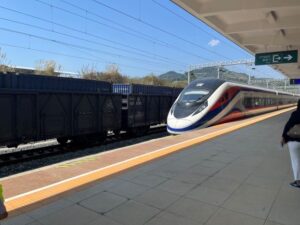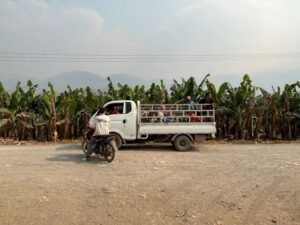「外部の技術」はどのようにして地域に根付いていくのか/タンザニア都市部の零細鉄工所における実践研究
対象とする問題の概要 タンザニアの一般的な家庭では、今でも薪炭材を燃料に伝統的なかまどを用いて調理しており、都市人口の増加にともなうエネルギー消費の拡大が森林資源の荒廃を深刻化させている。それを受けて先進諸国では、効率的で節約性に優れた改…

Banana investment is the largest fruit investment in Laos, mainly supplying the Chinese fruit market, and most of the investors are also Chinese. At its peak in the past, Laos had around 40,000 hectares of bananas, mainly concentrated in the north. Then severe pollution and a series of conflicts and problems led to the ban on bananas in 2016. Coupled with fluctuating market prices, many aspects of banana investment in Laos have changed. Only around 20,000 hectares of bananas remain, and the distribution area has gradually shifted southwards from the original north. But after 2016, little attention has been paid to the changes in Chinese banana investment, especially in Luang Namtha province, the border province between China and Laos, where the ban on bananas began. Luang Namtha province has long historical ties with China, being the place where rubber was first introduced in the 1990s and where banana investment first began to appear. At the same time, Luang Namtha province contains and manages the land border ports-Boten Port, through which almost all goods destined for China need to pass and is the most important land port between China and Laos. During Covid-19, the restrictions and closures of Boten port resulted in a large number of fruit investors suffering losses, such as bananas and watermelons. Luang Namtha is therefore a key area to investigate the history and development of Chinese banana investment and will help to understand more deeply the transformation and development of Chinese banana investment in Laos.
The main purpose of this study is to investigate the province most affected by the ban on bananas in Laos in 2016 as well as the province with the Boten port – Luang Namtha. The main focus is on the historical changes as well as the development of banana investment in this area. It also focuses on how the key part of banana transportation takes place at the Boten port, and what changes in the port border took place after the end of China’s Covid policy.

This study focuses on the history and development of Chinese banana investors as well as observed the impact of agricultural investments in other crops, such as cassava and sugar cane, on banana investments. Therefore, apart from natural disasters and market factors, what kind of crop will have an impact on Chinese banana investment, and in what way, and with what results, is something to watch in the future.
Copyright © 附属次世代型アジア・アフリカ教育研究センター All Rights Reserved.